Exploring the Northern Lights: Nature's Glorious Light Show
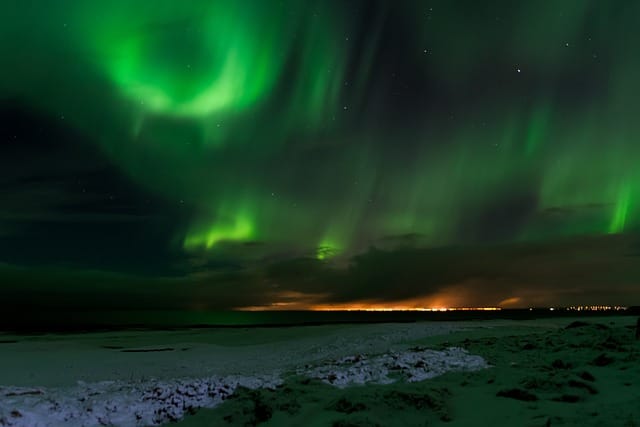
You all know that our Earth has a magnetic field. Because of this magnetic field, very interesting things happen around our Earth. Today, let's talk about northern lights.
How Earth's Magnetic Field Protects and Creates the Northern Lights
There are many factors that affect the existence of life on this planet. If one of these factors changes even by a tenth, then life on this planet can be completely wiped out. For example, if we talk about the Earth, it is located at a very specific distance from the Sun.
That's why the Earth's temperature is neither too high nor too low. That's why liquid water can exist on Earth, otherwise life on Earth could be completely wiped out.
Our sun also emits very strong ultraviolet rays. This is what we call UV or ultra violet radiation. If these rays fall directly on the earth, all living things on earth can be wiped out. But fortunately for us, the earth has the ozone layer.
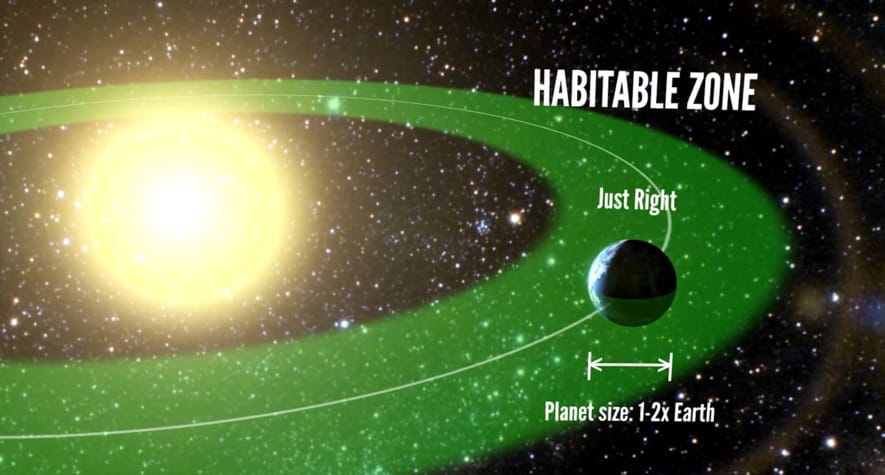
This can filter out this ultraviolet radiation. That's why life on Earth is able to exist in this way.
Solar Flares and Their Impact on Northern Lights Intensity
In addition to these electromagnetic fluctuations, due to the extremely high temperature of the Sun, electrons and protons in atoms are released and begin to move very quickly. This is what we call solar flares.
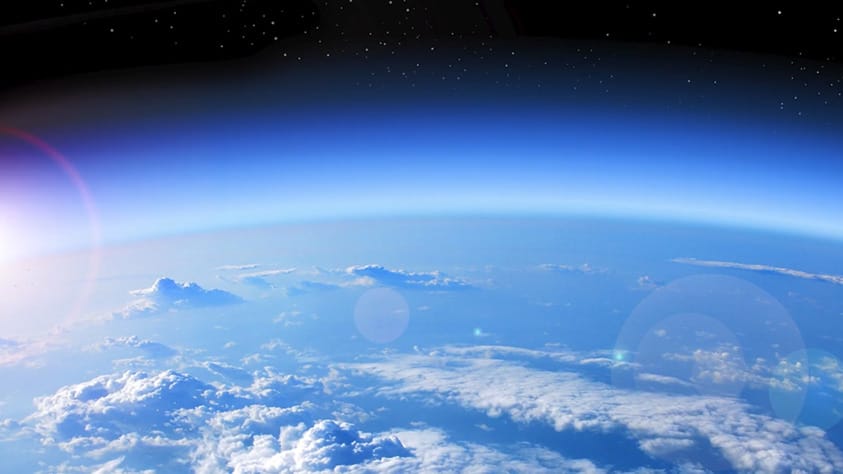
Northern Lights and Ionizing Radiation: The Science Explained
These very fast-moving protons and electrons can knock electrons in other atoms out of their orbits. That's why we call this ionizing radiation. So this ionizing radiation is not at all beneficial to living things.

But fortunately for us, the Earth has a magnetic field. This magnetic field can push this ionizing radiation away from the Earth. Without such a magnetic field, life on Earth would have completely disappeared.
So, even though these very fast-moving protons and electrons are pushed away by this magnetic field, some of them are able to enter our atmosphere through our north pole and south pole.
So this is how ionizing radiation, or solar flares, entering the atmosphere can increase the energy of the gas atoms in our atmosphere.
So the energy that is increased in this way is released back as photons, that is, as light, and this is why we can see the most beautiful aurora at our north pole and south pole.
Why Do the Northern Lights Appear Green? The Color Science Revealed
When solar flares entering the atmosphere hit the oxygen atoms in our atmosphere, they emit a green color, which is why we often see green or light green auroras.
Beyond Green: Red and Blue Northern Lights Phenomena
Similarly, when these solar flares hit the oxygen and ozone gases in the upper layers of our atmosphere, they emit a red color. However, a red aurora like this occurs very rarely.
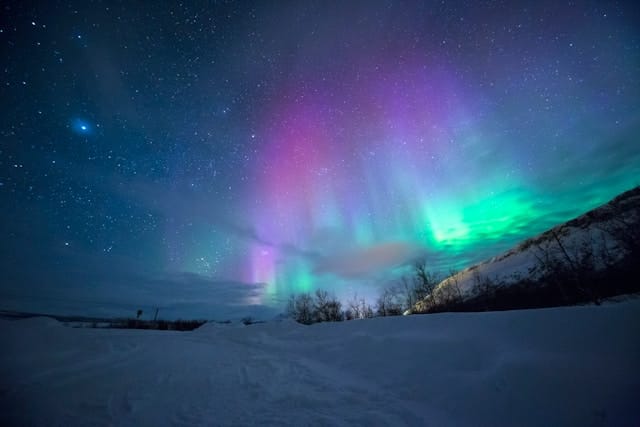
Also, when these solar flares hit the nitrogen in our atmosphere, they often emit a purple or blue color. So that's why we can see a blue or purple color mixed with this green color in these auroras.
Top Destinations to Witness the Northern Lights in Their Full Glory
So this aurora is one of the most beautiful sights on Earth. So now you're probably wondering if we have to go all the way to the North Pole to see this aurora. Can't we see the aurora like this if we go to the South Pole?
Just like the North Pole, the South Pole also experiences aurora. However, the only country at the South Pole is Antarctica. Antarctica is a completely uninhabited area. Traveling to such a place by plane and finding a place to stay is very difficult and expensive.
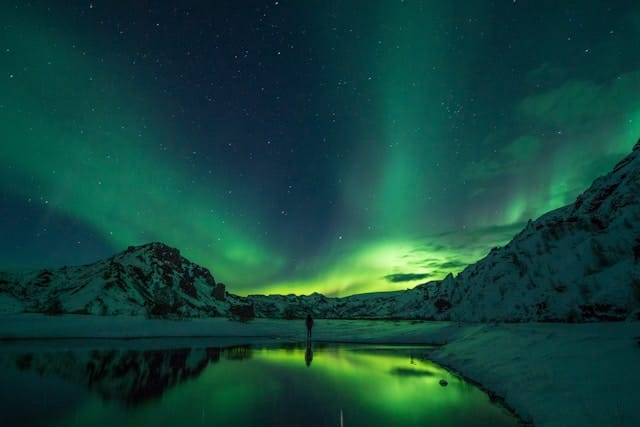
Best Seasons and Times to See the Northern Lights
But the North Pole is not like this. We see densely populated cities in those areas. Also, you can travel by plane and find a hotel to stay. So if you have an idea to go to the North Pole and see this aurora with your own eyes, then definitely choose the winter season at the North Pole.
Because the North Pole has very long nights during this winter. And our Sun's activity reaches its maximum level approximately once every 11 years. So if you choose a time when solar flares are very active, you will be able to see these auroras very brightly.
Van Allen Radiation Belts: The Northern Lights' Cosmic Connection
So as we've been talking about for a while, some of these solar flares are pushed away from Earth by Earth's magnetic field. Some of them enter our atmosphere at the north pole and south pole and become auroras.
Also, another part of these solar flares gets trapped inside the Earth's magnetic field. This trapped area is shaped like a donut around the Earth. We call this the Van Allen radiation belts. Usually we see two Van Allen radiation belts.
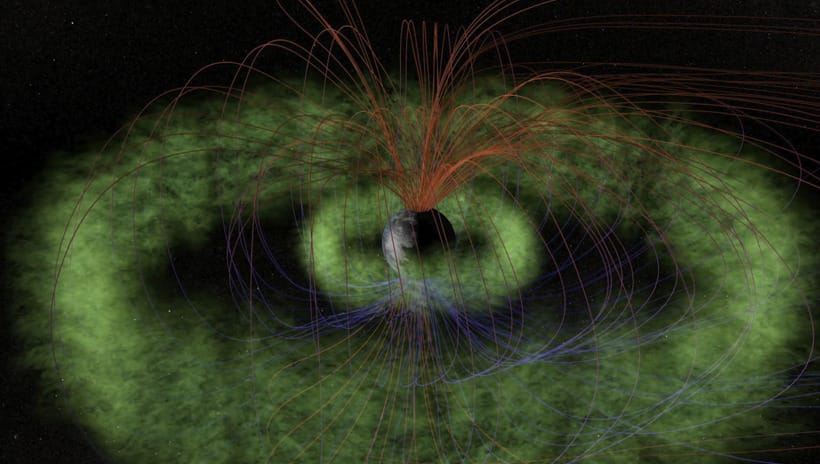
One belt is a little closer to Earth, and the other is a little further away. During periods of increased solar flare activity, we can temporarily see a third belt.
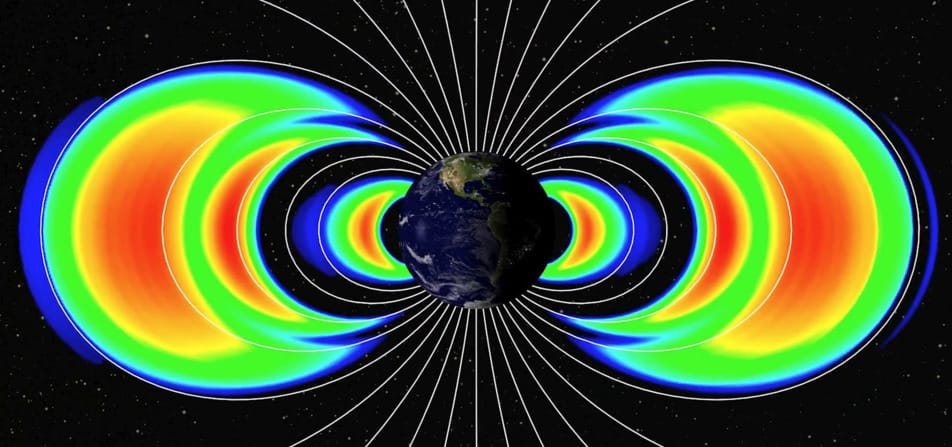
Inside this Van Allen radiation belt, solar flares are trapped by the Earth's magnetic field, which is why the radiation is very high there. If a person tries to travel through this, the person's life can even be lost due to this high radiation.
But anyway, humanity has only traveled through these Van Allen radiation belts on a few occasions. Those are the Apollo missions that we all know so well. So during these Apollo missions, the spacecraft that were going into space had to travel through these Van Allen radiation belts several times.
So, to save their lives from the turbulence in the Van Allen radiation belt, these scientists had to work especially hard. The capsule in which these astronauts traveled was protected with materials like aluminum and polyethylene.
So that's why these astronauts are still alive today. And that's why none of the Apollo missions traveled through the Van Allen radiation belt, they traveled along the side of it. So with this method, these scientists were able to greatly reduce the amount of radiation hitting these astronauts. However, some say that this Apollo mission never traveled past the Van Allen radiation belt, and that this Apollo mission never took a man to the moon.